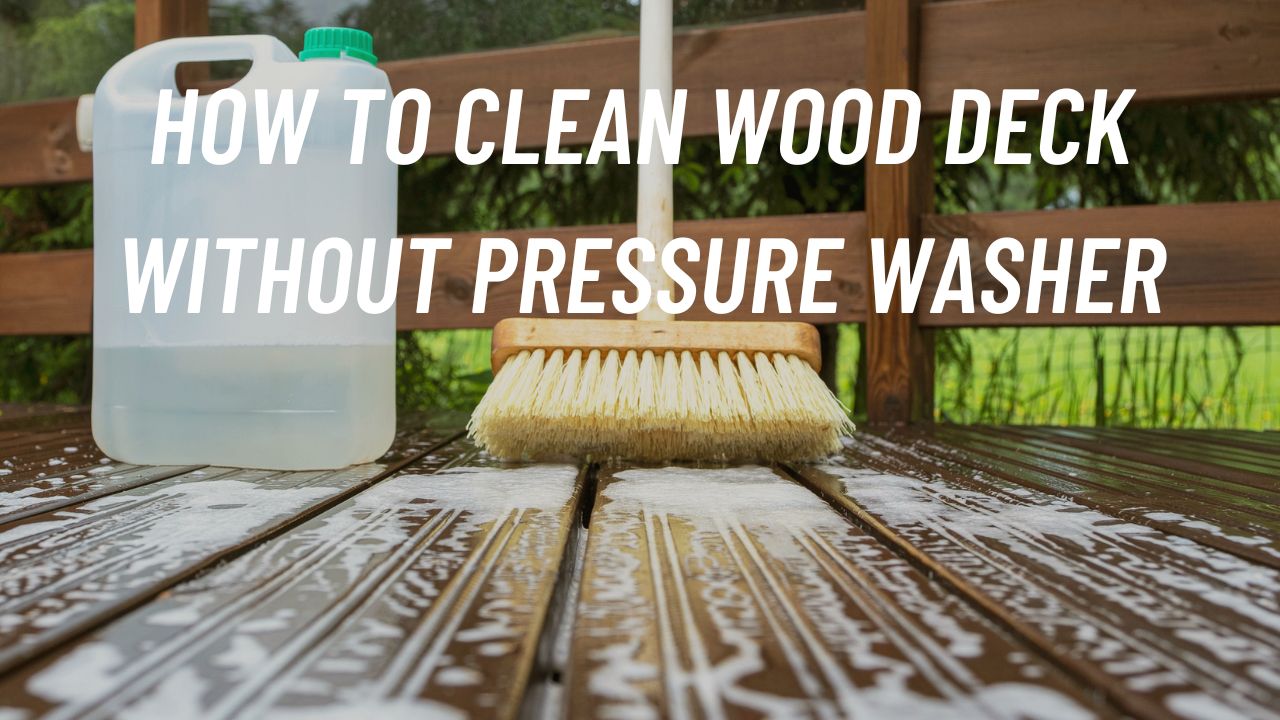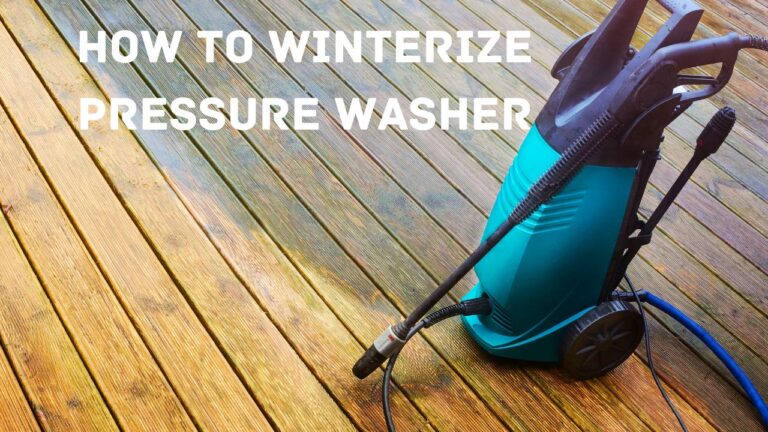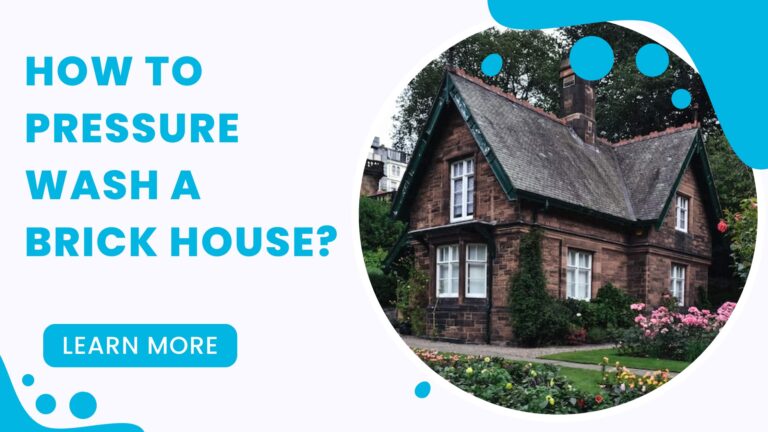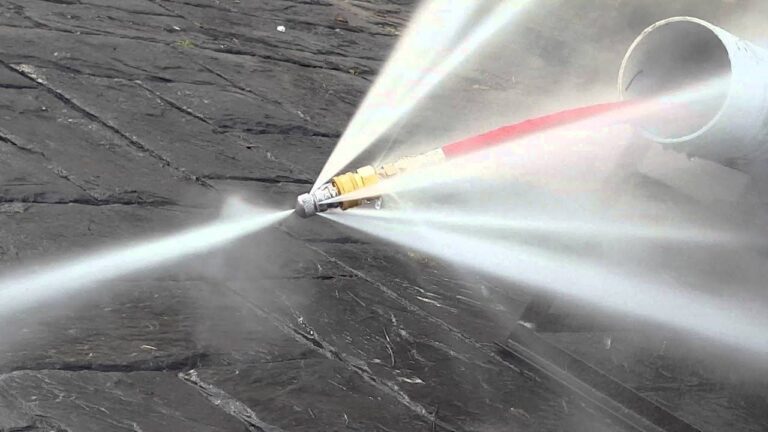How To Clean Wood Deck Without Pressure Washer
Wood is a reasonably quite porous material, which means dirt, grime, mold, mildew, etc., can get stuck in it and ruin all its shine and texture.
And to top it off, the fibers of the wood rise up due to impurities and trials of time, developing splinters in floorboards.
But with proper care and cleaning, you can take care of all that and extend the life of wood decks by at least 20 years.
The only problem is, you don’t own a pressure washer to ease and speed up the wood deck cleaning.
No worries.
With the methods discussed ahead, you don’t need a pressure washer to clean your wood decks. If you are wandering how to wash you wooden deck with pressure washer read our article about it. And as additional benefits, you will have a not-so-vicious electricity bill while even protecting the environment and saving water.
So, without any further ado, here’s how you can clean wood decks without a pressure washer.
How To Clean Wood Deck – Step By Step Guide
The details of the methods and steps involved in some specialized circumstances will be discussed ahead but first, let’s go over the typical steps involved in cleaning wood decks.
Step 1: Gather The Supplies
Here are the supplies you will most likely need to clean your wood deck:
- Buckets of water or hose supply
- Cleaning brush or broom
- Wood cleaning soaps/detergent – a mixture of vinegar works in most
- Bleach – if required to treat specific scenarios
Step 2: Sweep The Deck
Remove any loose dirt, debris, leaves, or any other loose material from the deck before cleaning it. Use a stiff-bristled broom for this purpose.
Step 3: Scrub Off Mold Or Mildew
You will need to remove mold and mildew, first, if they are present on your wooden deck. Here are the steps involved:
- Prepare your mold-killing solution
- You can fill a bucket of warm water mixed with oxygen bleach and detergent in a 1:1 ratio. (Another method is discussed below.)
- Pour the mold-killing solution onto the problem area and let it sit for 10-15 minutes. Remember to always follow the manufacturer’s instructions for the best results.
- Scrub the area with a broom or cleaning brush.
- Rinse with cold water.
- Repeat the process if needed.
Step 4: Apply Cleaning Solution
You will need to apply the cleaning solution to get a nice clean on your wooden deck. But here’s a homemade recipe for you that works just as well as any cleaning solution (if not better!) – Vinegar!
You can use a mixture of concentrated vinegar to treat problem areas that appear moldy or dirty. It will even take care of pesky algae (you can also use pool chlorine to treat algae). Here are the steps involved:
- Mix 1 cup of vinegar in 2 cups of water.
- You can also mix equal amounts of vinegar and water and add just a pinch of salt.
- Use a spray bottle to apply the solution. It will give you more precision and prevent the solution from seeping into the soil or lawn.
- Try giving the solution 10 to 15 minutes to sit.
- Scrub the cleaning solution with a brush.
- Rinse off with cold water
Step 5: Rinse With Cold Water
Use plenty of cold water to rinse your deck. Start from one end and make your way to the other end and make sure to cover all areas thoroughly. Do multiple passes for good measure.
It is necessary to rinse off residual cleaning solution because otherwise, they will cause damage or discoloration.
Step 6: (Optional) Apply Sealer or Stain
If you want a true shine in your wood deck, you will have to sand the deck first (although you will have to sand the deck when it is completely dry). You can read more on how to stain a wooden deck.
You can use a roller, brush, or even better: a lint-free rag, to apply wood stain. The rag will help you apply the stain evenly, but you can also use a sprayer for this purpose.
Besides giving your deck a nice shine and color, applying a sealer serves additional benefits as well. It repels moisture from your deck, thereby inhibiting fungal growth as well as wood rot.
However, when it comes to protection against the Sun’s harmful UV rays – that can discolor and crack your wooden decks – applying a stain is your best bet. Unlike a sealer, a stain penetrates into the wood grains.
Wood stain lasts almost 5 times longer than a sealer (which lasts around 3-6 months). Although wood stain looks better and more professional, it can be trickier to apply. Not to mention that it is also more expensive than a sealer.
Using Soap Salts To Remove Mold And Mildew
This is an alternate method to the one discussed in step 3. You can use potassium salts of fatty acids, which are commonly referred to as “soap salts”. They are used as fungicides and insecticides and would eradicate mold and mildew from your wooden deck.
Here are the steps to follow:
- Remove all loose debris from the deck.
- Prepare the solution as per the manufacturer’s instructions while always wearing gloves.
- Use a mop to spread the solution in a small area of the board.
- Scrub the covered area using a hard brush.
- Repeat the steps on another small area of the board until all the mold is cleaned off.
- Use plenty of water to thoroughly rinse off the soap salts.
Detergent And Bleach Mix Will Clean Your Deck Up
To take care of your dirty deck, which also has mildew stains, you can use a cleaning solution made up of detergent and bleach. Mildew comes from plants growing nearby, and considering that it is a wooden deck, it is highly likely your deck will also be enduring mildew.
Here’s how you can prepare and apply this concoction:
- Mix 1 cup of household bleach and ¼ cup of laundry detergent in 1 gallon of water.
- Apply the solution on the deck and let it sit for 10-15 minutes.
- Use a scrub brush to agitate the solution and remove any dirt, grime, or mildew.
- Work in small sections and use a circular motion to scrub the surface.
- Rinse the deck thoroughly to remove all the cleaning mixture.
You can also read our article about homemade detergent for pressure washer.
FAQs
How do I naturally clean my wood deck?
There are several ways you can naturally clean wood decks. Our favorite is with white vinegar. Just fill a bucket with water and add some white vinegar to it and you are good to go cleaning your wooden deck from this mixture. You can also use warm water with a few drops of dish soap to clean dirt and stains from your wood deck.
What is the best way to clean wooden decking?
The best way to clean wooden decking would depend on its condition. You can use white vinegar to clean it throughout the year. The detergent and bleach mixture will also serve an efficient cleaning purpose. You can apply a wood stain afterwards. To top it all off, sand the deck (and perform the steps associated with sanding) once every 3-5 years.
How do you power wash a deck without a power washer?
Power washing is typically a term used with power washers. Since you want to achieve the same (if not better) level of cleaning as a pressure washer, you can use a high-pressure hose nozzle that attaches to the garden hose. You should also use cleaning solutions and scrubbing to power wash your wooden deck without a power washer.
Is vinegar good to clean a wood deck?
Yes, vinegar is excellent for cleaning wood decks. It is readily available in your cupboard, and you can also use it all year round to clean your wood deck. However, since it is acidic, you might not want to use it in a concentrated solution, especially if you don’t want to damage the vegetation growing around your wood deck.
Final Words
A little maintenance of wood decks goes a long way, 20 years long that is. Yes, that’s how long they can last if you take proper care of them.
Apply a cleaning solution to take care of stains on the wood deck. A mixture of laundry detergent and bleach in water will do the job.
You can use white vinegar to take care of mold or mildew growing on the deck. Some soap salts are also available that will work just like pesticides and algaecides to clean up your wood deck.
Do plenty of scrubbing and rinse thoroughly to make sure all the damaging or discoloring impurities are removed from the deck.
Apply a sealer or wood stain afterwards.
Finally, to make your wood deck good as new, sand it once every 3-5 years. Click here to learn more about it.







